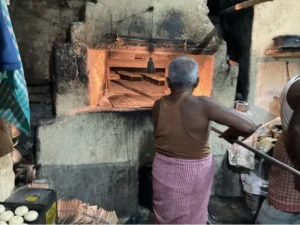Long before community boroari pujas became the defining image of Bengal’s festive landscape, celebrations n the aristocratic Bengali households – often referred to as bonedi bari puja – formed the core of local religious and social life. Each household shaped its own ritual calendar, inherited idols, musical traditions, and food customs, creating distinctive identities that still endure. What makes these pujas truly compelling is the continuity of heritage.
Durga Puja at the ancestral home of the Mullicks at Bhawanipore. What makes the Mullick Bari puja unique is its quiet grandeur- a refusal to chase spectacle. The ekchala idol at Mullickbari, crafted in the classic daaker saaj style, glows with an understated elegance, while the courtyard resonates with dhaak, shankho and mirth.
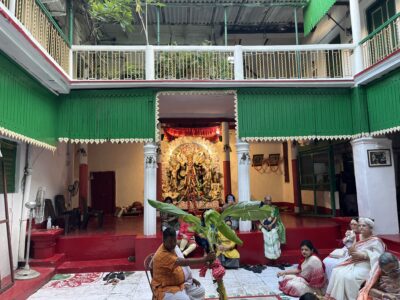
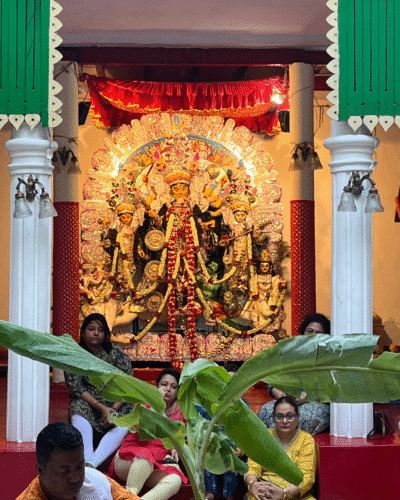
At Janbazar, the Rani Rashmoni Bari Durga Puja stands as a timeless emblem of Bengal’s devotional grandeur – a celebration born from the vision of a woman who defied her times. The ekchala pratima, with its traditional daaker saaj and silver embellishments, stands resplendent under chandeliers that have seen two centuries of worship. Every ritual – from Bodhon to Sandhi Puja – is performed with precision passed down through generations, preserving the grandeur of old Calcutta.
Unlike many aristocratic puja closed to the public, Rani Rashmoni’s was and still is a janajagaran (public awakening). The doors of the ancestral courtyard remain open to all, echoing her belief that the goddess belongs not to one family, but to the community.
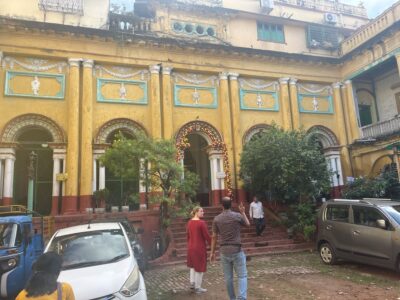
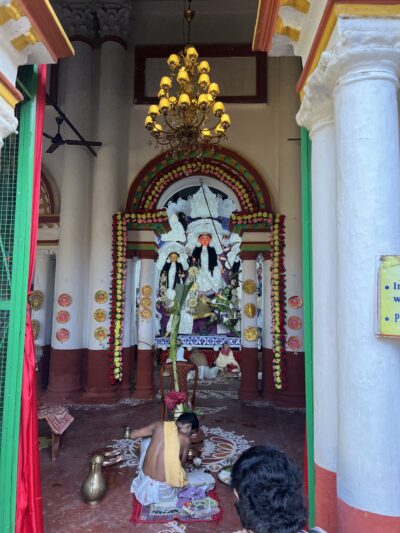
At Thanthania Rajbari, along with Durga, there is also the worship of Hara-Gouri – that is, Lord Shiva (Hara) and Goddess Parvati (Gouri), as a divine couple. This practice reflects the Tantric-Shakta influence deeply rooted in North Kolkata’s spiritual geography, especially around the nearby Thanthania Kali Temple. The area itself derives its name from Thanthania Kali, an ancient shrine of Maa Siddheshwari Kali. The worship of Hara-Gouri ties the Rajbari puja to the same Shakta (Kali-worshipping) energy – acknowledging Shiva as the eternal consort of the Devi.
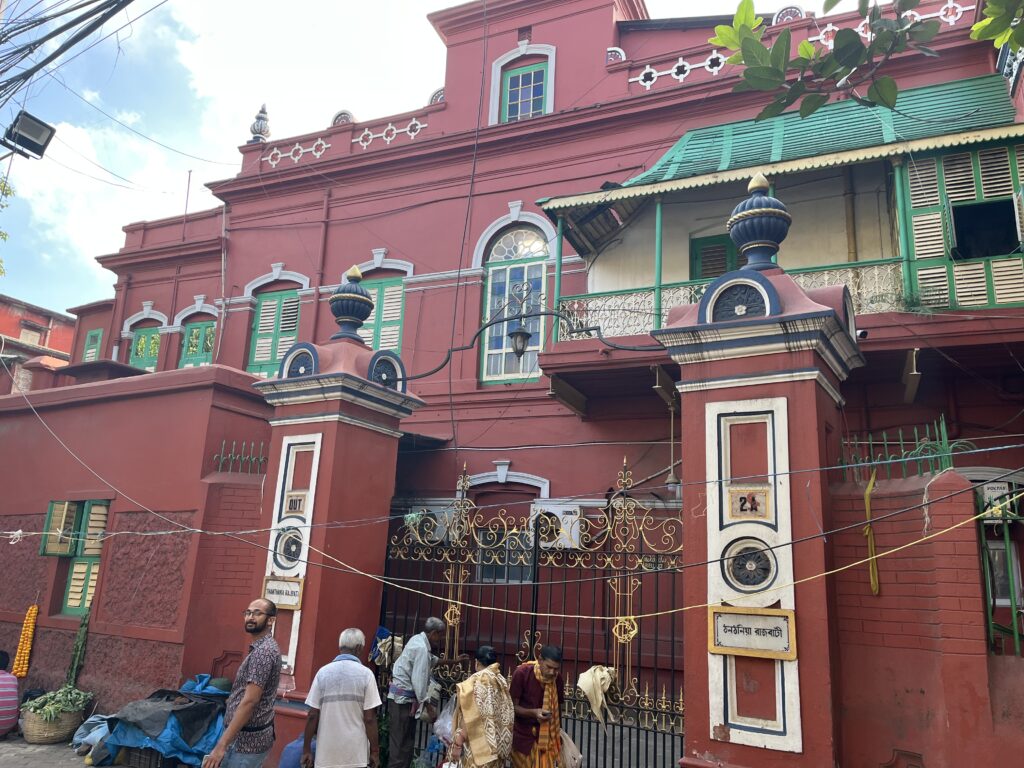
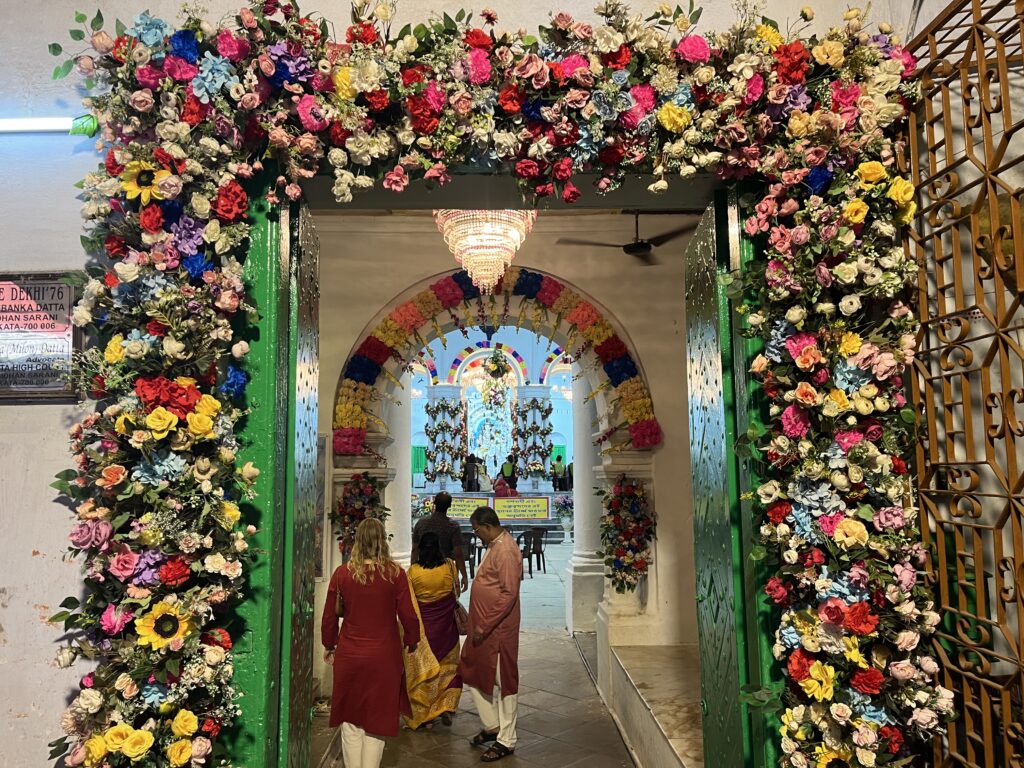

The family of Chatubabu-Latubabu were patrons of art and music. In the early years, baijis (classical performers) and later kirtan troupes performed here – turning the puja into a cultural gathering.
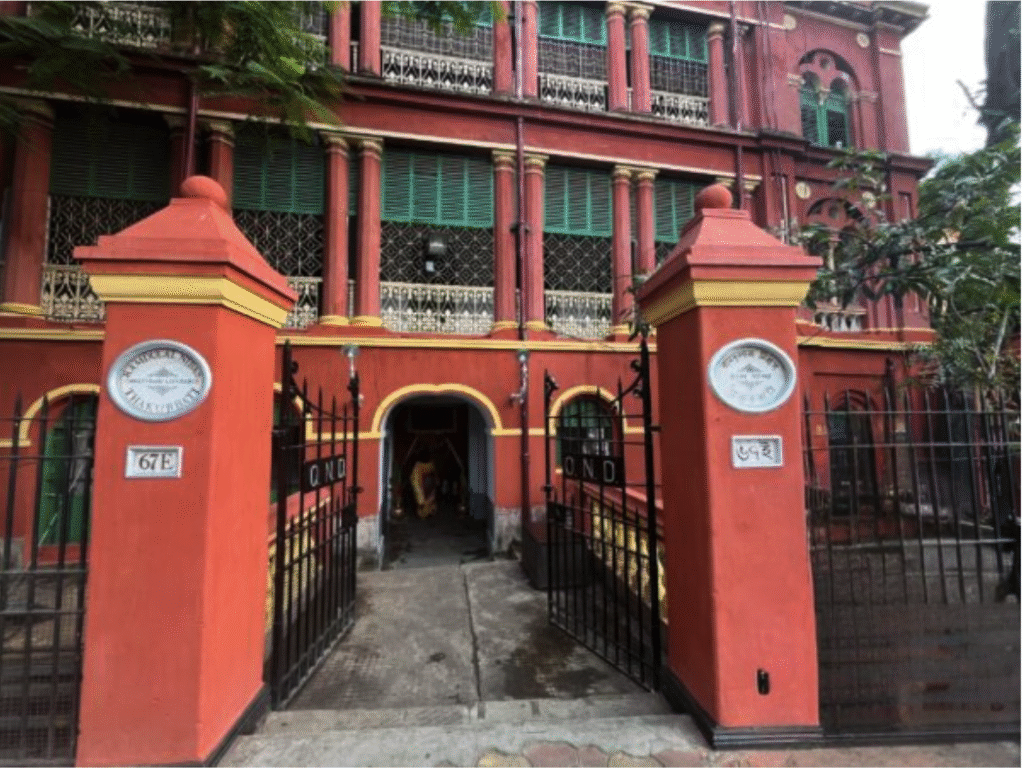
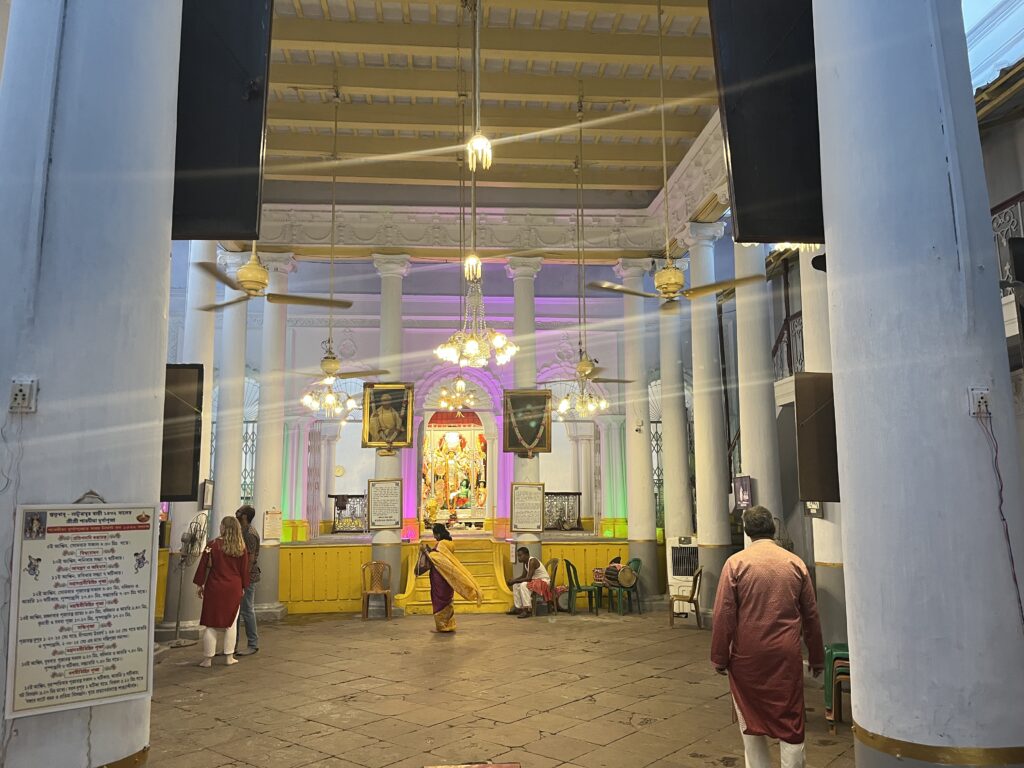
The first and main puja at Sovabazar Rajbari was started by Maharaja Nabakrishna Deb in the 18th century. It was a grand aristocratic affair, meant to display both devotion and social prestige. This is the famous puja that drew nobles, British officials, and artists – essentially the royal/public puja.

Over time, different branches of the family wanted to maintain their own rituals separately while still participating in the main celebrations. As a result, Sovabazar Rajbari now hosts a second, smaller puja, more private and intimate, usually conducted by specific family members who follow the original family ritual in their own section of the mansion.
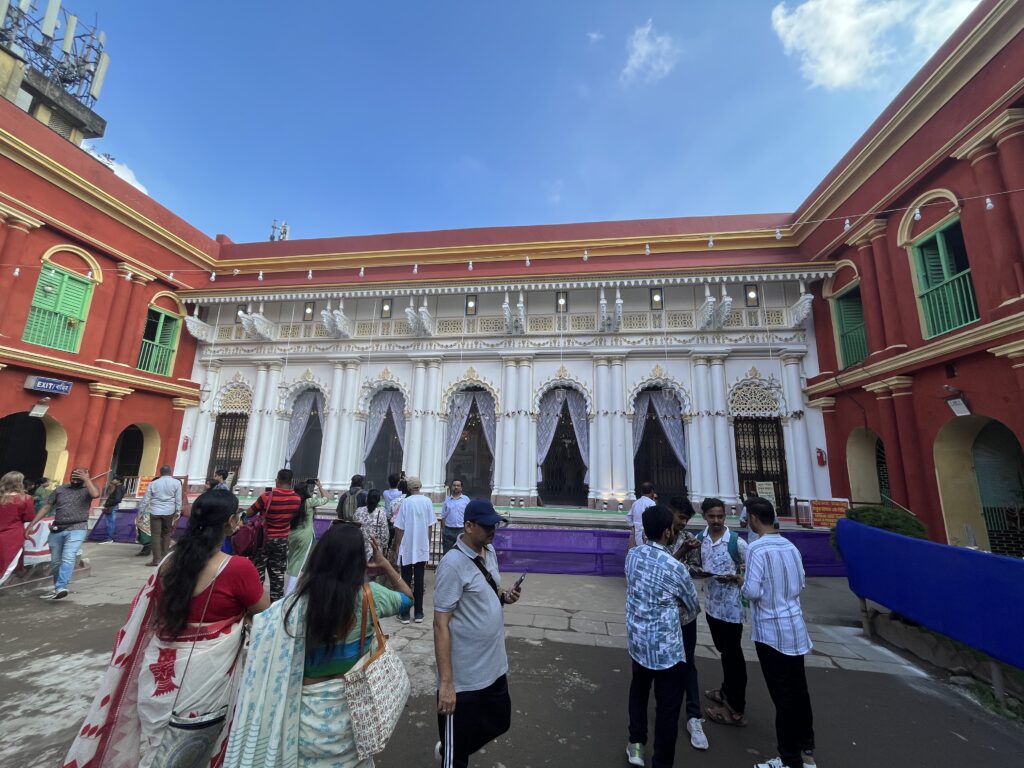
The Durga idol at Nabakrishna Deb’s mansion is crafted in the classic “shabeki” style, with intricate daaker saaj (foil ornamentation) and accompanied by her children — Lakshmi, Saraswati, Ganesha, and Kartikeya. The puja preserves ritual continuity over centuries, making it a living heritage site.
In the heart of Kolkata, Khelat Bhavan Durga Puja celebrates centuries of aristocratic tradition. The puja preserves ancestral rituals, with the goddess in a classic ekchala shabeki idol adorned with delicate daaker saaj.
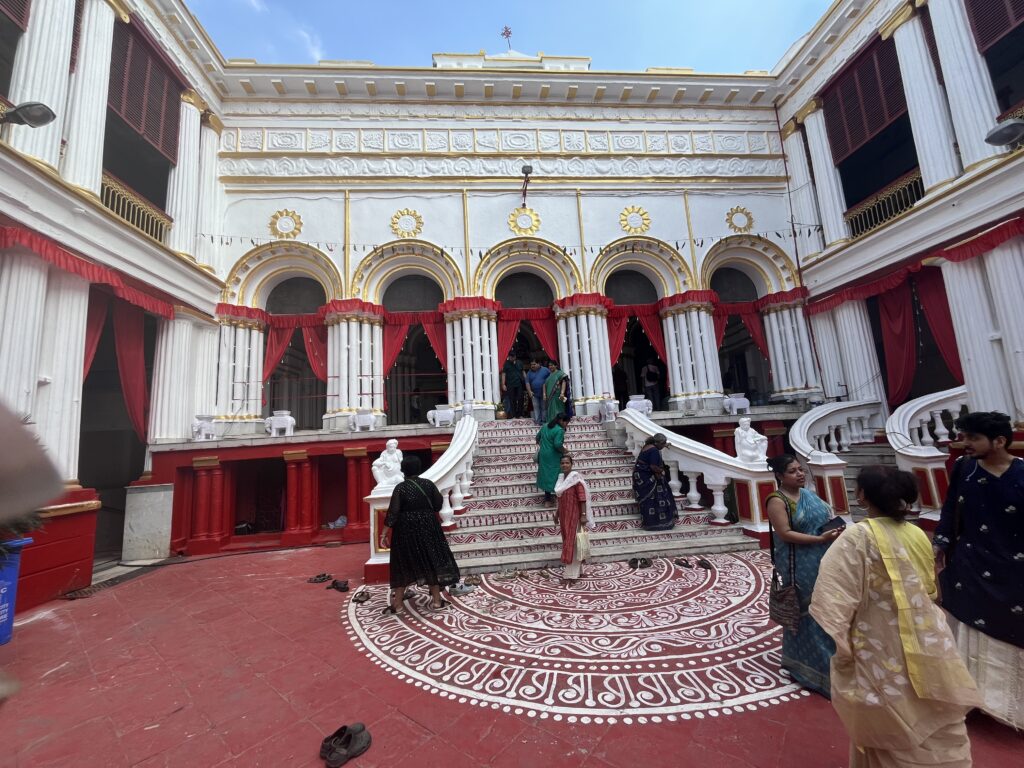
What makes it unique is its serene elegance – no themes, no spectacle – just devotion, music, and ritual continuity.

In the historic lanes of North Kolkata, Daw Jorasanko Durga Puja stands as a quiet emblem of heritage and devotion. Conducted for generations by one of the city’s old bonedi families, it preserves traditional rituals, priestly lineages, and the classic ekchala shabeki idol adorned with daaker saaj. Beyond worship, the puja has been a hub for music and cultural performances, reflecting Kolkata’s aristocratic past. With its serene elegance and focus on faith over spectacle, Daw Jorasanko Puja remains a living testament to the city’s enduring devotional and cultural legacy.


This piece finds its roots in the Bonedi Bari Puja Parikrama tour organised by Global Connections.

